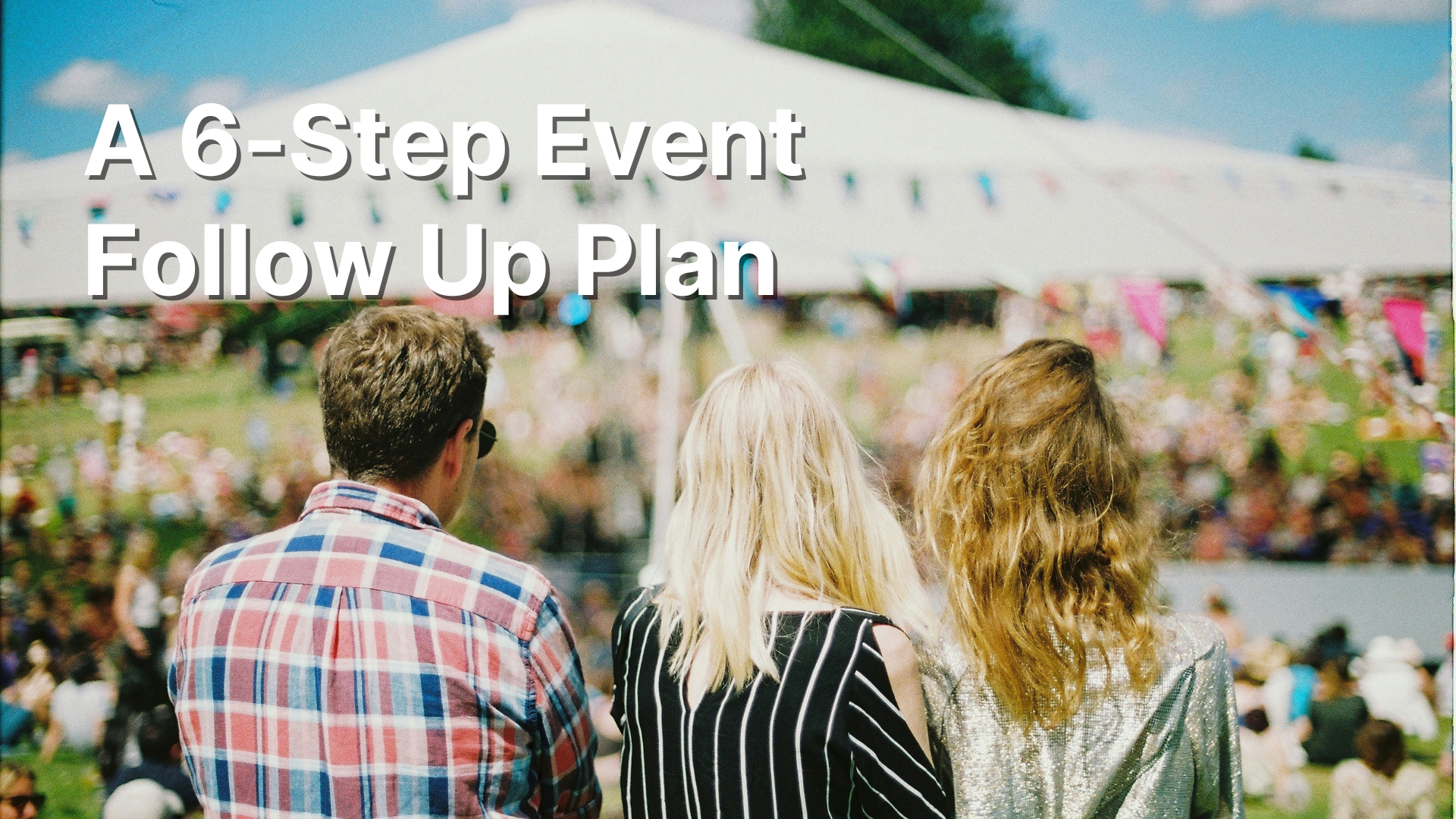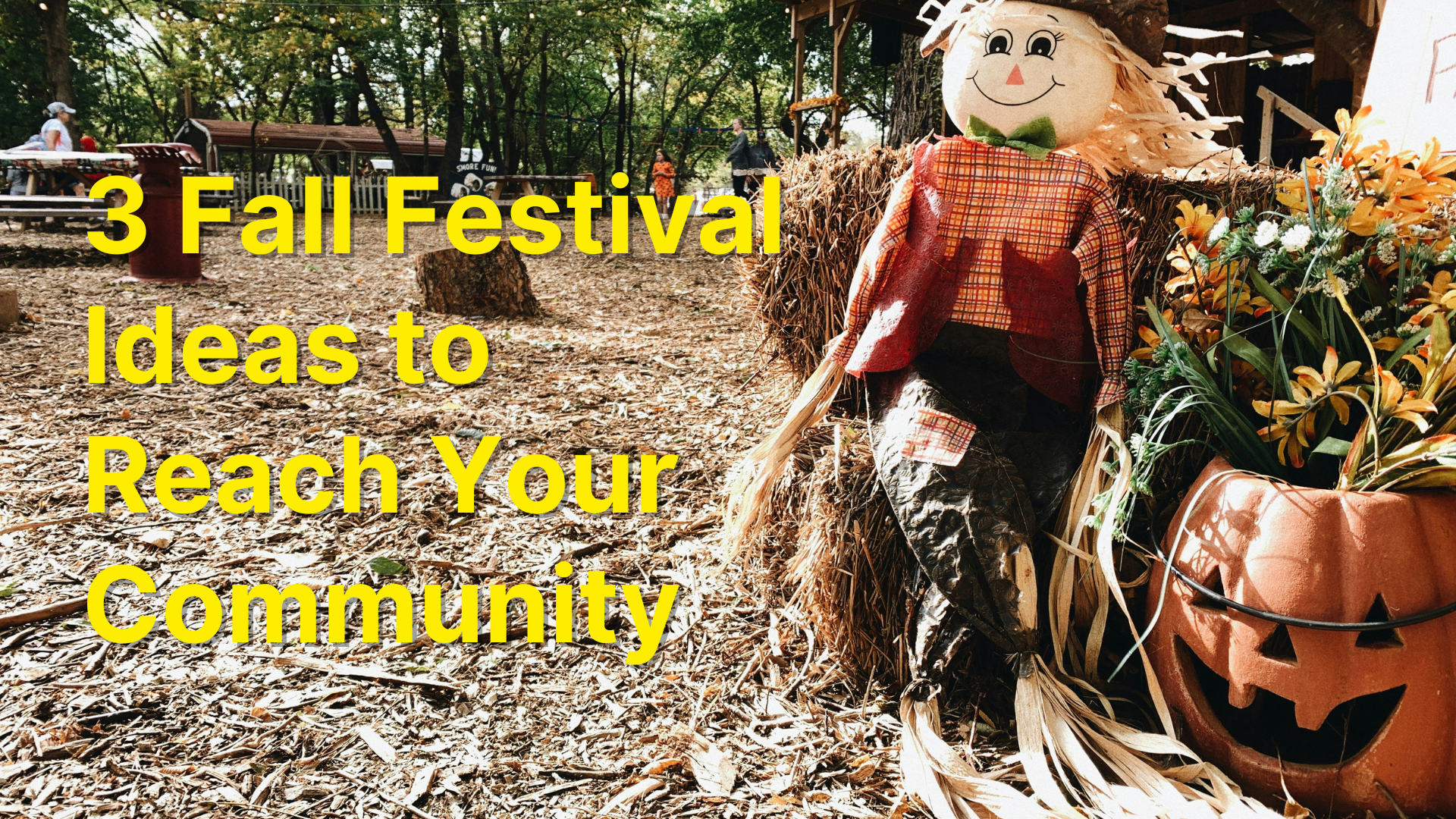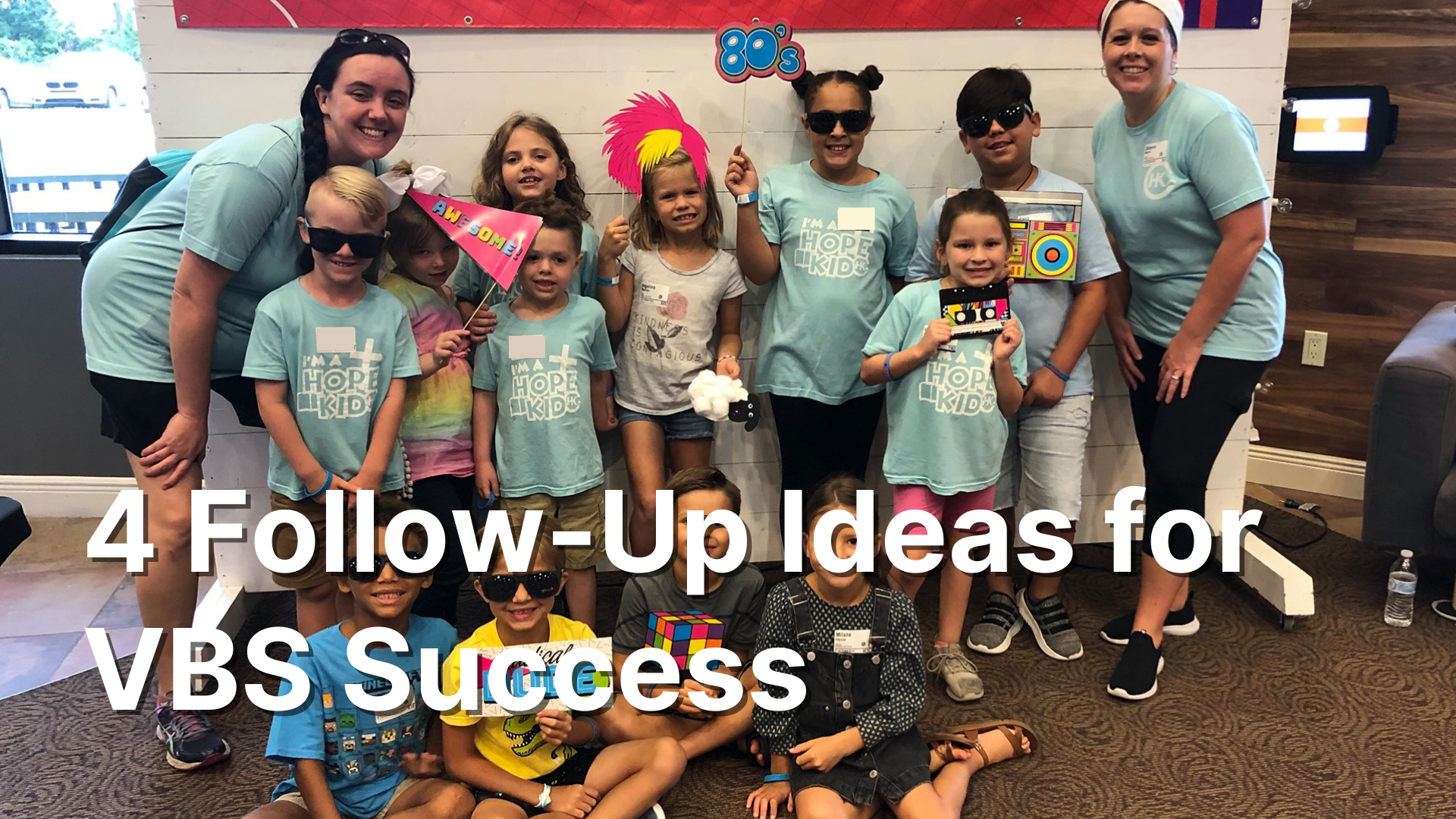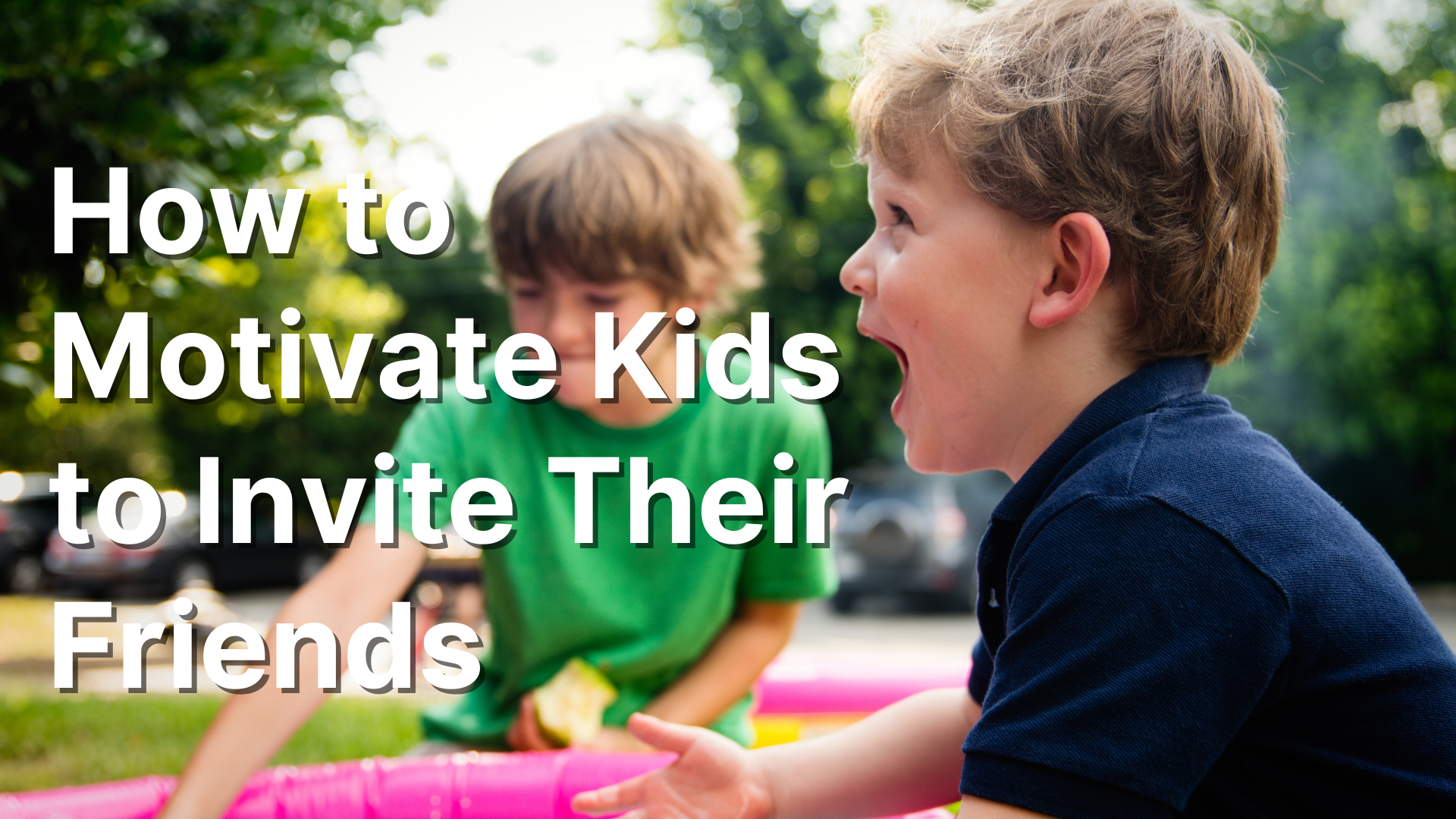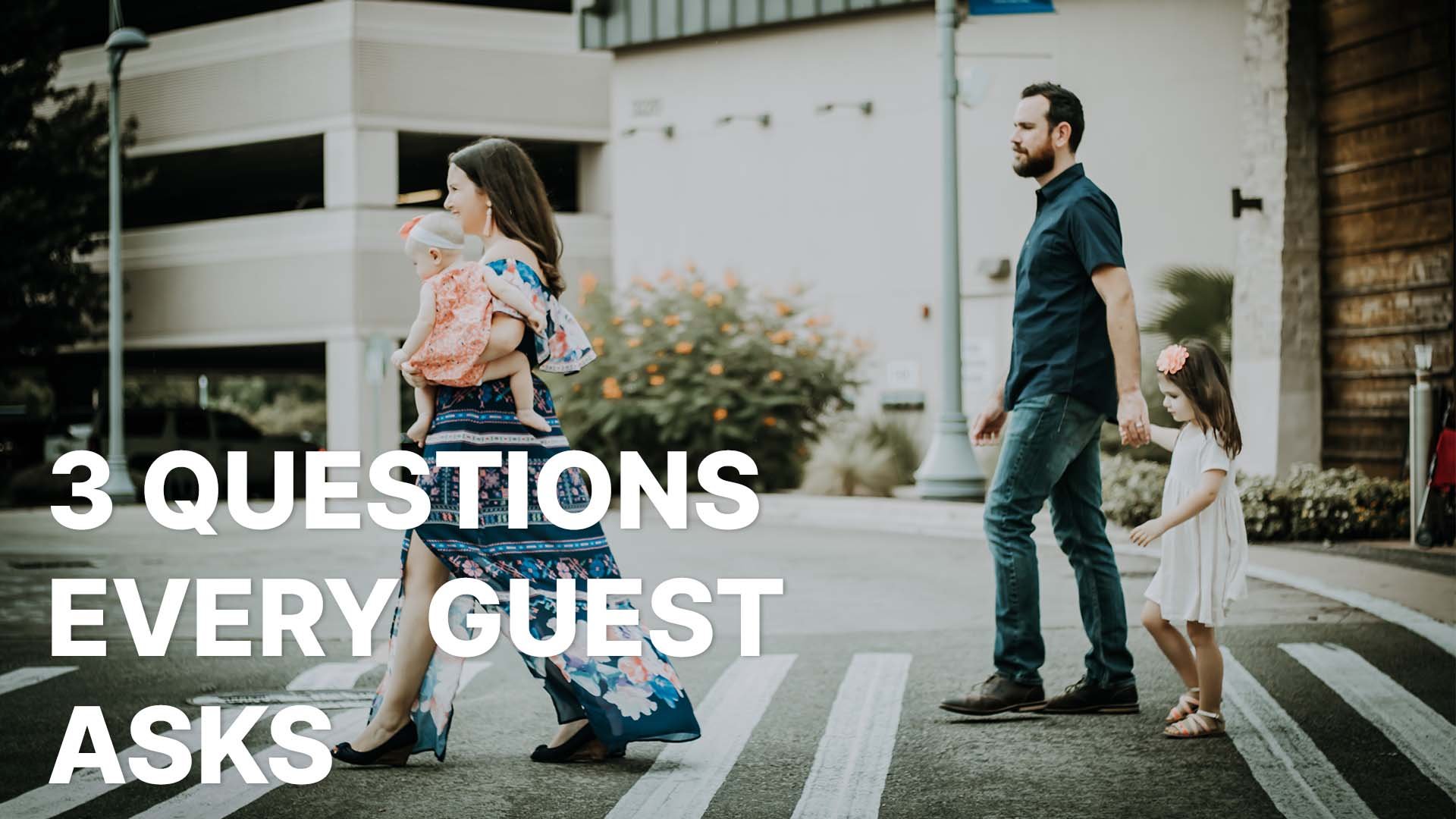A 6-Step Event Follow Up Plan
Photo by Aranxa Esteve on Unsplash
It was my second year of full time ministry. We put on a huge Trunk or Treat and doubled in size. All told 1400 people came to our event. We were excited for how many guests would come on the following Sunday. Since we were a church of 400 having more than a thousand extra people on campus was a big deal. Sunday came and when the dust settled, we realized something was off. Only one person came to church that Sunday as a result of our event. I know I should be happy with one because a soul is a soul. However, to put all that effort into an event designed to get people to attend church and only one comes? That’s a horrible return on investment.
Looking back, I realized that part of my problem was follow up. When learning to hit a ball, one of the main things you lean is to follow through. It’s the same with any outreach event. Once your event is over, you’re not done. You have to follow up with everyone who came, especially guests. But with all these new people, how do we get them to come back? How do we connect them to our church?
COVID accelerated a lot of things and one thing it showed us was the need for community. People are longing for human connection. They want it more than a fancy service, great music, or a remarkable guest experience. We still need those things, but we have to connect them to a community. It’s what people crave.
No matter what event you do, there are specific things you can do to get people to come back and avoid what happened to me.
1. Invite people.
Weeks before your outreach begins, challenge your people to invite their friends. Community is built around knowing people. There are few more daunting things than walking into a new new place and not knowing anyone. But, if the guest has a friend waiting for them, it ensures they’ll have a good first impression. It's even better when they come together. When the guest arrives on campus, they will already know someone. And that someone can introduce them to others. Only the most outgoing people can show up to an event where they don’t know anyone and make friends. Having friends already there overcomes that challenge.
2. Collect their info.
Depending on your event, collecting guest’s info can be really simple or near impossible. For a kids event when parents are dropping off, you need to collect a bunch of personal information. Since it's under the guise of safety for their kids, parents will happily share. However, for events like a Car Show or Fall Festival, collecting someone's personal information is far more difficult. People don’t want to share their personal information, and they definitely don’t want to do it for free. So, have some kind of incentive like a drawing for a gift cards. People will share their contact information more readily. You won’t catch everyone, but it’s better than nothing. I talk about how to do this best in a fall festival in this post.
3. Send them a personalized card.
We’ve officially arrived at your first touch point after the event. There are three types of people who attend any outreach event: your regulars, church-hoppers, and guests. I talk about those three groups more in this post. While I want to focus on guests as much as possible, I still send a card to everyone who attended the event. You want to show your appreciation to your regulars as much as the new people. They don’t want to be taken for granted.
I qualify a guest as someone who hasn’t visited once in the last 6 months. When someone attends one of our events for the first time, I send them a personalized thank you postcard. In addition, I offer a free gift from our kids’ store in kidmin or a small gift card, like $5 to Chick-fil-a. This incentive motivates your people to come back. It doesn’t have to be expensive, but something of value they want. For kids, I stock my store with items from Five Below, where everything is between $1 and $10. Yes it's cheap, but the kids love it.. The personalized card also sends the signal that they matter more than just printing out a label. On the adult side, we send a personalized thank you card signed by the senior pastor with a $5 Chick-Fil-A gift card.
4. Make a phone call.
While everyone who comes gets a postcard, not everyone gets a phone call. Every guest who shared their information should receive a personalized phone call. The call doesn't have to be from you. It can be someone else on your pastoral team or a high-capacity volunteer. The purpose of the call is to begin building community. I encourage my callers to ask 3 questions:
What did you think of the event?
What brought you to the event?
How can I pray for you?
Then I tell them about their best next step. For me that's attending a service, Growth Track, or join a small group.
5. Send them an email.
If your guests share a legible, valid email address, you should add them to your email list. You don’t want to spam them but keep a regular touchpoint. They may not be ready to attend a Sunday service, but that may change in in time. If you’re regularly in their inbox, they’re far more likely to think of coming to you.
These emails are not marketing emails. Rather they're written like a personal email. It drives the person to action, like signing up for next steps, joining a group, or attending a "get to know you" event. I talk more about sending a weekly email here. (link)
With email, the key to not end up in spam is to be consistent, timely, and have a clear, clickable, call to action. The more the readers click the link the less likely their email provider will flag the message as spam.
6. Keep reaching out.
Even if you don’t see your guests again until your next big event, don’t give up on reaching out. Continue to send postcards, emails, or even a phone call when your next event is coming. Continuing to make the connection shows that you care. And that you think of them as a real human person, not just a number.
As you implement this follow-up process, my hope is that you see a steady stream of guests return. Not just for growth’s sake, but for seeing more people come to Christ.

